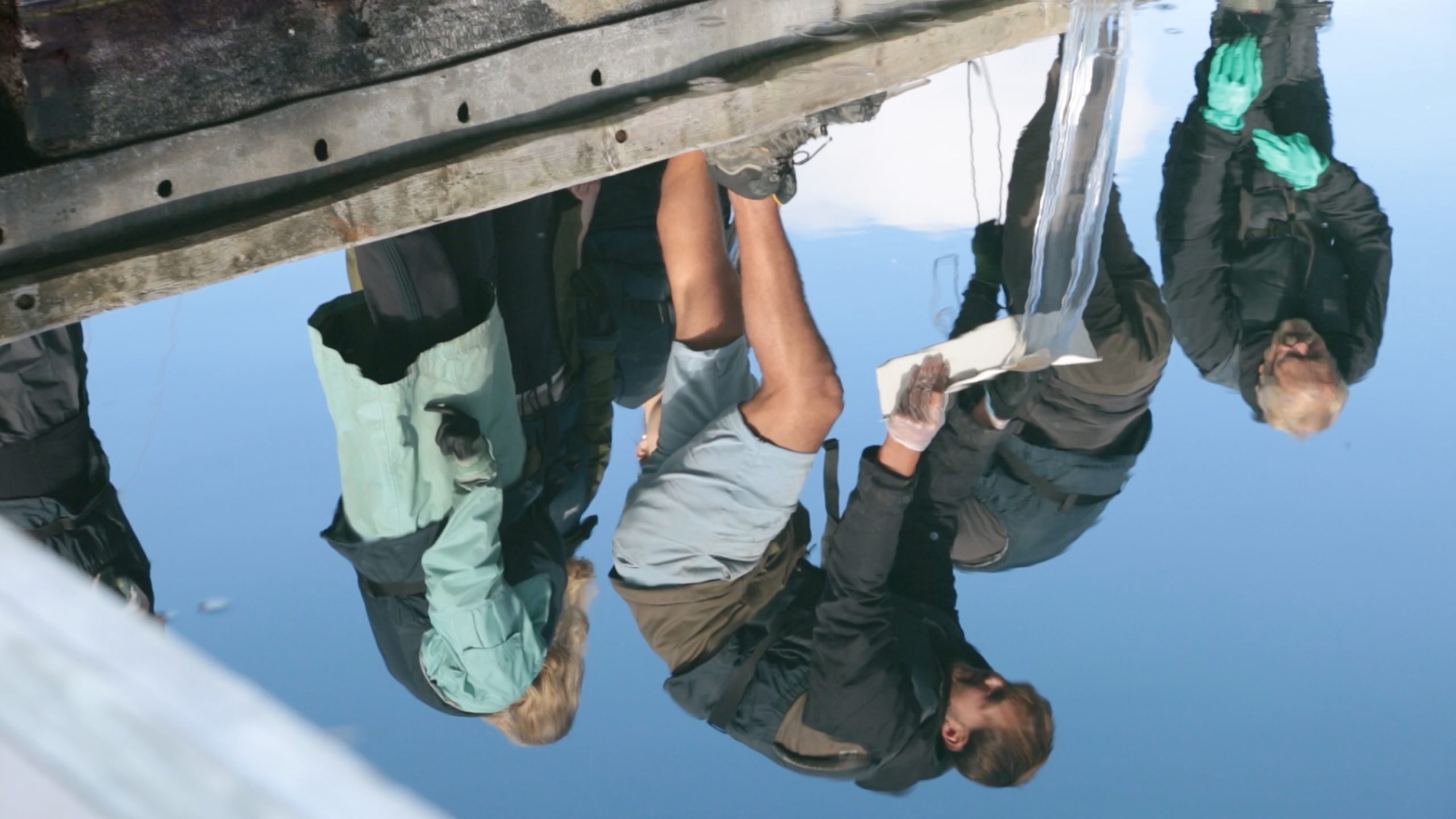Two North East artists feature in new group exhibition at Baltic Centre for Contemporary Art
8th October 2025

A major new group exhibition opening at Baltic Centre for Contemporary Art on Saturday 8 November features work by two acclaimed North East artists. For All At Last Return, which explores the human connection to the world’s fragile marine ecosystems, features work by Newcastle-based artists and researchers Michele Allen and Rob Smith.
They join ten other international artists in exploring different ocean habitats – from near-shore and intertidal zones to coral reefs, the open ocean and the deep sea – and considering people’s shared relationships with these fragile environments and their dependent communities.
Working with photography, sound, video, text and archival research, Michele Allen’s practice is deeply rooted in place, creating projects that often span several years and involve work with communities, environmental experts and academics to explore our relationships with the natural world and each other. Michele’s new work in For All At Last Return considers coastal ecologies in North East England, documenting the restoration of lost habitats and the recent die-off of marine species.
Rob Smith’s work explores human relationships with marine environments, and the ways digital technologies can materialise these remote and inaccessible places. In For All At Last Return, he investigates the recent discovery of ‘dark oxygen’ generated by deep-sea nodules in a new multimedia work with real-time data. His projects bring together fieldwork, photography, and digital imaging processes with sculptural and site-based practices, testing how artworks can open speculative encounters with deep ocean environments.
An immersive exhibition, For All At Last Return journeys through underwater worlds from the ocean’s surface to the seabed, examining the impact of human activity on marine habitats and aquatic life. Working at the intersection of art and ecology, many of the artists in the exhibition have collaborated with marine biologists and oceanographers to raise awareness of the local, regional and global issues that threaten marine ecosystems, and to foster dialogue across disciplines.
Joan Jonas’ multimedia installation Moving Off The Land II (2019) pays tribute to ocean life, its biodiversity, intelligence and complex ecologies. Monira Al Qadiri’s Zephyr sculptures (2023) reimagine ancient marine fossils found in desert regions, reminding us that these delicate marine organisms have existed for millions of years, long before our seas receded. And Taloi Havini and Michael Toisuta’s films Dengung Hyena and Hyena Lullaby Hyena Lullaby (2019) explore the regeneration of coral reefs at night through mass coral-spawning.
Baltic Centre for Contemporary Art is located next to the River Tyne, a tidal river, and is built on land that was once salt meadow habitat, eight miles from the North Sea. In the development of the exhibition, the curators have been in conversation with artists, marine biologists, oceanographers, researchers and conservationists, and over the course of the next six months Baltic will host a public programme with talks, workshops, performances, and films expanding on the theme of the exhibition.
Also opening on Saturday 8 November is the first solo exhibition in a UK institution by artist and filmmaker Saodat Ismailova, a leading voice in Central Asian art.
The exhibition presents the world premiere of Swan Lake 2025, alongside works from her two decade-long career. Together, they consider thresholds, transitions and power, memory and personal and collective consciousness. They think about the void, the suspended state during political and psychic change, where dreaming becomes possible, but which can also be subject to manipulation and control.
The exhibition is structured around the central work Swan Lake, a double-channel film composed from existing feature films from post-Soviet Central Asia. It seeks to capture the spirit of a period of immense transition in the region’s recent history — Perestroika — a time that remains a neglected part of collective experience. It was an era of upheaval, struggle, and survival: the collapse of an idea alongside an extreme pitch of hope, a time of losing ground, of liberation, grief, rage, and joy.
These years were marked by strange and iconic figures — the hypnotist Kashpirovsky, the legendary rock group Kino, and the ballet Swan Lake, which the vast Soviet Union broadcast on a continuous loop for almost 24 hours, while its citizens, unaware of what was unfolding, witnessed the disappearance of their country. Those hours became a ghostly overture to the collapse of the Soviet Union, signed away beyond the eyes of its people. The film is dedicated to the children of Perestroika, and to the forgotten films that captured the spirit of those turbulent times.
Spanning film, sound, installation and sculpture, Ismailova often uses archival footage alongside striking iconography and hypnotic narratives that trace the loss marked by successive regime change to the spirit.
For All At Last Return opens at Baltic Centre for Contemporary Art on Saturday 8 November and runs until 7 June 2026. The exhibition is curated by Emma Dean, Senior Curator, with Amani Mitha, Assistant Curator.
An exhibition of the work of Saodat Ismailova entitled Midnight Sun, also opens at Baltic Centre for Contemporary Art on Saturday 8 November and runs until 7 June 2026.
For more information visit www.baltic.art
